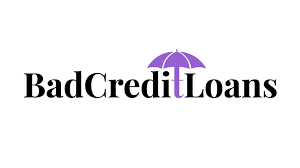President Biden announced another set of student loan cancellations, totaling $7.4 billion for 277,000 borrowers, hoping to gain more support from students and young voters who are hugely affected by increasing education costs. However, some of these voters may distance themselves because of the President’s policy on Israel and the war in Gaza.
Looking For Student Loan?
This time, the White House has embraced a strategy to take smaller, targeted actions for a specific group of borrowers unlike last year, when the Supreme Court invalidated his more ambitious plan of eliminating $400 billion debt.
Despite Republican opposition and legal challenges, Mr. Biden has announced his intention to make another attempt at large-scale debt forgiveness, which may affect roughly 30 million individuals. In the meantime, he is working to reduce student debt by fixing and streamlining existing programs plagued by bureaucratic and other issues for years.
Friday’s student debt forgiveness announcement was the most recent action of its kind, impacting about 277,000 people. So far, the Biden administration has forgiven $153 billion debt for 4.3 million borrowers. According to the education secretary, Miguel A. Cardon, they’ve assisted one out of ten of the 43 million Americans who have taken federal student loans.
What opposition have to say about student debt forgiveness?
Some Republicans in Congress view debt relief as being unfair to borrowers who manage to pay off their student loans without any assistance.
During the hearing on Wednesday, Representative John Moolenaar, a Michigan Republican, said, ”You’re incentivizing people to not pay back student loans and at the same time penalizing and forcing people who did to subsidize those who didn’t.”
To this, Mr. Cardona responded that this isn’t unfair in his view. Instead, they are fixing something that is broken. With better repayment programs now available, they no longer have to forgive loans in the future.
What is the present student debt forgiveness plan of the Biden administration?
The Department of Education is presently forgiving the student debt for more than 200,000 borrowers who had initially borrowed a relatively modest sum, $12,000 or less, and have been making monthly payments through the administration’s income-driven repayment plan, SAVE.
Other qualified recipients of the aid include teachers, librarians, academics, and public safety workers who have been fulfilling debt for at least a decade under the Public Service Loan Forgiveness program. Mr. Cardona stated that an additional 65,000 borrowers enrolled in other income-driven repayment plan will see modifications that will reduce their debt.
What’s a SAVE income-driven repayment plan?
The SAVE plan was introduced last year when the Supreme Court rejected the White House’s broad student loan forgiveness plan. If borrowers’ initial debt amount was less than $12,000 and they have been making monthly payment for last 10 years, then they may be eligible for debt forgiveness.
Since its launch last year, SAVE has had almost 8 million borrowers enroll, and approximately 36,000 individuals have had their remaining debt forgiven under the new plan’s terms. Prior to the SAVE program, the federal government had already implemented various income-driven repayment plans. These plans linked borrowers’ monthly payments to their income and family size instead of the amount they owed on the loan.
Enrolling in SAVE, the latest federal income-based repayment plan can help borrowers save a significant amount on their monthly loan payments. Under this plan, borrowers can end up paying as little as $0 per month.
Presently, the payments are capped at 10% of the borrower’s discretionary income. However, Biden’s revised version will result in some borrowers seeing their monthly payments halved when the plan is completely phased in by July.
Additional benefit to borrowers enrolled in SAVE
If borrowers make full monthly payments, then they won’t have to worry about any unpaid interest accruing. In simple terms, it means that even if the monthly payment doesn’t cover the interest accumulated in a given month, the borrower’s balance will remain the same and won’t increase.
Biden’s other efforts to eliminate student debt
In 2022, the President proposed a student loan forgiveness plan that was intended to be comprehensive, but it was invalidated by the Supreme Court before it could provide any debt relief.
This program could erase a maximum of $20,000 debt for borrowers earning less than $125,000 annually. The estimated cost of the program was $400 billion. But the Supreme Court ruled that the Biden administration exceeded its authority with the proposed program.
Nevertheless, President Biden has eliminated more student debt than any President to date, primarily using the existing programs. His administration has facilitated the qualification of certain groups of borrowers, such as public-sector employees, disabled borrowers, and individuals who were defrauded by for-profit institutions, for student loan debt forgiveness.
The Department of Education is also reviewing previous payments to rectify administrative errors, which is bringing some people closer to debt relief.
Biden’s future plans for student debt forgiveness
The Biden administration has been developing a set of new proposals since the fall. These proposals are based on different legal authorities and are intended to provide relief to specific groups of borrowers. For example, it can wipe away the additional interest that has accumulated on top of the amount they originally borrowed. These proposals have not yet been finalized, but several of them can take effect as early as this fall, as stated by administration officials.





